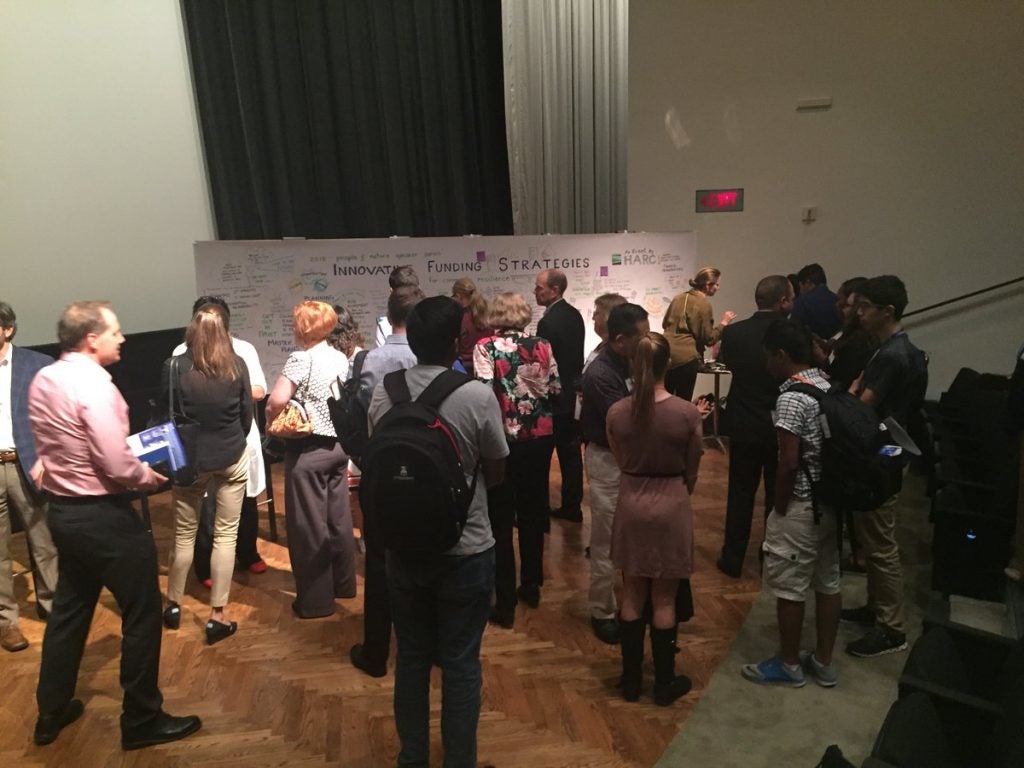With the impacts of Hurricane Florence continuing to unfold, coastal communities in the Southeast will soon be looking to other coastal areas, like Houston, as models for rebuilding resiliently. By doing so, they can speed their recovery and build back in smart ways – because that’s what resilience is all about.
For Houston, it wasn’t a single event that triggered discussions of resilience. Houston residents have faced a decade of intense storms and floods, with Hurricane Ike in 2008, the Memorial Day Flood of 2015, the Tax Day Flood of 2016 and Hurricane Harvey in 2017. Together, these repeat catastrophic events sounded the alarm that past approaches to managing flood waters are not sufficient.
Last week, I went to Houston to help decision-makers explore how the city can realize its aim to become more resilient. One year after Harvey, Houston is still learning from its experiences and building upon lessons learned from mega-disasters like Katrina and Sandy to move more rapidly into resilience-building phases. That’s good news, because with more frequent, intense weather events, communities across the nation are going to have to rebuild smarter.
Once communities and officials in the Southeast begin thinking about recovery from Florence and preparing to rebuild, there are four key lessons they can learn from Houston after Harvey that will ultimately help them strengthen the social, economic and environmental fabric of the region.
1. Leadership is critical
Leadership styles set the tone for how others behave. By actively participating in roundtable discussions, Houston’s chief resilience officer Stephen Costello and Hurricane Harvey recovery czar Marvin Odum demonstrated their commitment to exploring ideas, openness to hearing from constituent groups, and willingness to learn from the experiences of others, including those outside of Texas, like me.

Citizens of Houston gather at the Houston Advanced Research Center’s 2018 People and Nature Series to discuss lessons learned from Harvey and to plan for future resilience. Photo credit: HARC
While fear and frustration were expressed, there exists an inspiring energy to make Houston an even more desirable place to live – a place that’s economically stronger and more resilient. This optimism and local pride will help the region shift from the status quo to embracing change. For example, Houston could show the rest of the nation how sprawling urbanized areas can adapt to new realities of climate change.
2. Create a common vision for resilience
Building resilience is a responsibility that belongs to many entities, and developing a common vision, with strong leadership, will help align state and local agencies to find ways to achieve that vision. Unified governance and shared ownership of solutions allow cities to blend resources and expertise to make the seemingly impossible possible.
Additionally, by identifying patterns and relationships, a systems approach looks beyond immediate events or localized solutions to solve problems in creative ways. The broader and deeper understanding that systems thinking creates will result in more effective, sustainable solutions that address multiple needs.
3. Involve the community from the outset
Besides being good practice, community-based dialogues help to identify and understand the broader social and economic systems at work in a project area. Involving citizens, businesses and non-governmental organizations in resilience planning helps build greater understanding of risk and the need for actions that reduce risk.
After mega storms like Harvey or Florence, building resilience is key. Here's how we can manage future risks. Share on XUnderstanding the roles, relationships and interdependencies between different stakeholders helps to align interests in ways that aid development of multi-functional solutions that address more than one need. Working with communities before the inevitable next big storm allows time to develop well-thought-out plans, broadly backed by stakeholders, and thus capable of garnering funding.
4. Attracting private capital
Houston is thinking hard about how to attract private sector participation in building resilience. Articulating and quantifying benefits of programs and projects has always been necessary to convince decision-makers, build political support, establish priorities and secure government funds. But now, it’s critical to find innovative ways to help pay for these projects.
New tools like social and environmental impact bonds – pay-for-success debt-financing mechanisms – offer new opportunities to attract private capital. Clearly defined, measureable, and compelling social or environmental outcomes are key to designing these transactions to attract private partners and investors.
Other tools being considered, like resilience bonds – a variant on catastrophe bonds that reward investment in actions that reduce the effects of disasters – will also need clear quantifiable evidence around which to design a viable transaction. Given its progress, Houston is laying a foundation for becoming a leader in innovative finance for resilience.
After mega storms like Harvey or Florence, building resilience is key. Federal, state and local government – plus individuals, non-governmental organizations and businesses – have the responsibility to manage future risks now by developing response and recovery plans in advance of storms.
Let’s not wait for the next storm to bounce back better.










